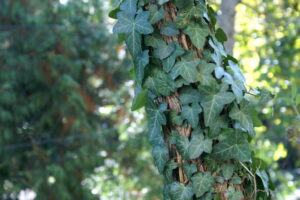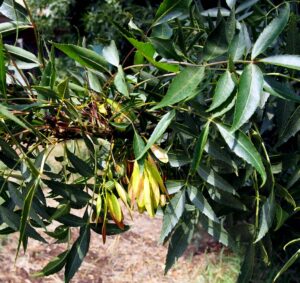How can you help?
1. Keep to the constructed trails
Most of the land along the creek is being rehabilitated or restored. Keeping to the trail helps prevent native vegetation and newly planted seedlings from getting trampled and reduces erosion, soil compaction and the spread of weeds.
2. Manage your pets
We are lucky to have Wallabies, Echidnas and other animals living here. Keeping your dog leashed will prevent them harassing or injuring wildlife.
Don’t let your cats leave home!
Cats kill about 4.7 million native animals every day in Australia.


3. Deal with your rubbish responsibly
Disposing of rubbish onto public land is not only illegal and ugly; it promotes weed growth, poisons the soil for native plants and creates a fire hazard. Garden waste can be composted at home to provide rich humus to improve your garden soil. Non-compostable items should be recycled or go to Castlemaine waste facility. Make sure you don’t discard fishing line or rubbish into the creek. This can entangle and drown aquatic fauna like platypus.
4. Report any undesirable activity
Depending on the nature of the undesirable activity you can report sightings to the Police, the Environment Protection Authority, the Department of Environment, Land, Water and Planning, the Mount Alexander Shire Council or the Friends of Campbells Creek (we’ll pass it on to the appropriate body). Take note of the time and place and vehicle registration numbers if possible. It can help track down offenders if you can take photographs (but keep yourself safe – people who know they are doing the wrong thing may be aggressive).
Vandalism
Apart from graffiti, we also get some damage to plantings and tree-guards or stakes removed.
Motorcycle riding
This isn’t the place for motorcycles. There are
many roads available elsewhere on public land.
Firewood harvesting
There is no right to collect firewood from the Creekside lands. Dead trees and fallen timber are important habitat resources.
Cage traps/’opera house’ nets
These are illegal in waterways because they can drown aquatic fauna such as Platypus, Water Rats and Turtles.
5. Eliminate the "Thugs" from your garden
Plants such as Ivy, Cotoneaster, Cherry-plum, Elderberry, Gazania, Box-Elder, Desert Ash, Euphorbia, Italian Lavender and even Violet are all invading the creekside land. Their seed spreads from gardens.
Why not try growing some of our local indigenous plants instead? There are plenty to choose from and they’ll make your garden much more attractive for native wildlife.
Check your lawn. Most lawn seed sold is full of invasive species: Ryegrass, Kentucky Bluegrass, Creeping Bent as well as Couch Grass and Kikuyu are all very significant problems along the creek.
You can now buy seed of native grasses suitable for lawns. They need less water, fertilizer and mowing and help support a healthier environment while looking great!
6. Nutrients: Too much of a good thing
Phosphorous and nitrogen are essential elements for life. When too much of these nutrients get into the water, the growth of algae (and other aquatic plants) increases dramatically.
This is often called a ‘bloom’ and may even be toxic.
Once the aquatic plants die, their decomposition can remove oxygen from the water and kill fish, yabbies and other animals that get their oxygen from the water. This is called eutrophication.
Campbells Creek used to be the largest single source of phosphate pollution in the whole Loddon catchment. This was because of Castlemaine’s sewage. After the wastewater treatment plant was upgraded in 2000, the amount of nutrient pollution was reduced, but the creek still experiences algal blooms whenever flows are low in summer.
Nutrients also get into waterways from erosion, animal wastes and urban runoff.
People can help reduce their load on the creek environment by choosing phosphate free laundry and dishwashing detergents, cleaning up their dog’s faeces so they don’t wash into the creek and making sure land is well vegetated so it doesn’t erode.
Minimising the addition of nutrients and fertilizer to the catchment will also help. Grow your own food fertilized by composted wastes.
Native plants are well adapted to the very low fertility of the natural Australian landscape. Most of south eastern Australia’s settled areas now have over-fertilized soil that grows weeds so well, the native plants are outcompeted and can’t regenerate.









